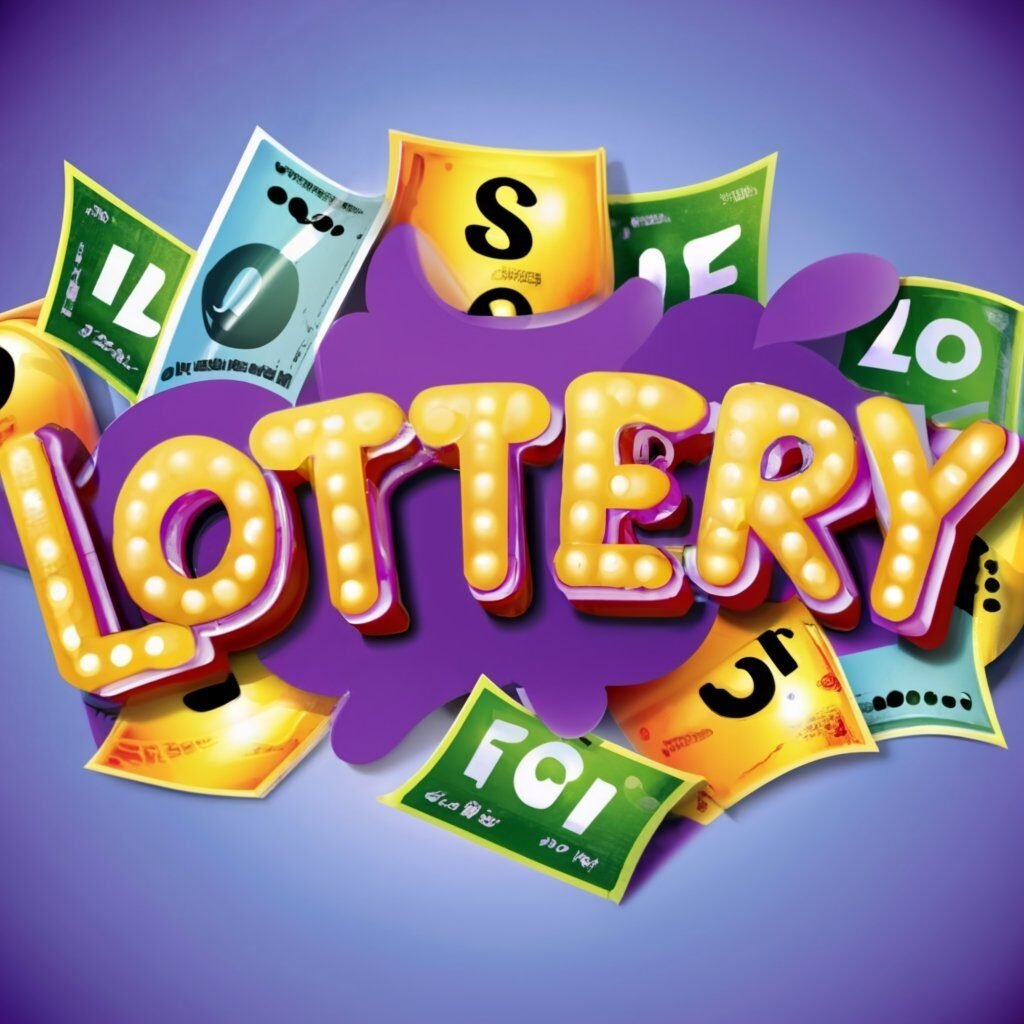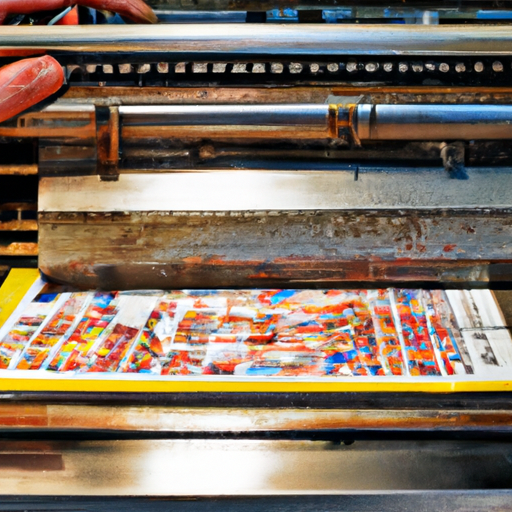Imagine the excitement you feel when you hold a lottery ticket in your hands, dreaming of winning a life-changing jackpot. But have you ever wondered how these tickets are made? In this article, we will take you behind the scenes and reveal the fascinating process behind creating those seemingly magical pieces of paper. From the intricate design work to the security measures implemented, you will gain a newfound appreciation for the craftsmanship and effort that goes into producing these tickets. So, let’s embark on a captivating journey and unravel the secrets of how lottery tickets come to life.
Printing the Tickets
Designing the Ticket
When it comes to designing lottery tickets, careful attention is given to the aesthetics and functionality of the ticket. The design aims to capture the attention of potential buyers while still providing essential information, such as the game name, ticket price, and prize structure. Additionally, colors, symbols, and graphics are incorporated to create an attractive and engaging ticket that appeals to a wide range of players.
Printing Technologies Used
The printing process of lottery tickets utilizes advanced technologies to ensure the highest quality and authenticity. State-of-the-art printing machines, including digital and offset printers, are employed to produce thousands of tickets efficiently. These technologies allow for precise color reproduction, intricate patterns, and the incorporation of security features.
Security Features
To protect against counterfeiting and fraud, lottery tickets come equipped with various security features. These features are integrated into the design and printing process to ensure the authenticity of each ticket. Some common security measures include holographic foils, UV-detectable inks, microprinted text, and hidden images that can only be revealed under specific lighting conditions. These features make it incredibly difficult for counterfeiters to reproduce tickets accurately.
Quality Control
Maintaining quality standards is crucial in the lottery ticket production process. Quality control measures are implemented at every stage to ensure that each ticket meets the required specifications. Experienced technicians closely monitor the printing process, checking for any flaws, such as misprints, color inconsistencies, or paper defects. Through thorough quality control, the chances of producing defective or flawed tickets are minimized, ensuring that customers receive high-quality and reliable products.
Paper and Ink
Special Paper
Lottery tickets are printed on specially selected paper with unique characteristics. The paper used is typically made of high-quality materials that resist wear and tear, ensuring the ticket remains intact throughout its lifespan. This special paper is carefully chosen to withstand folding, handling, and exposure to various environmental conditions, enhancing the ticket’s durability.
Anti-counterfeiting Measures
To combat counterfeiting attempts, lottery tickets employ anti-counterfeiting measures in their paper composition. These measures may include incorporating watermarks, security threads, or custom fibers into the paper. These elements are only visible when the ticket is held under specific lighting conditions, making it extremely difficult for counterfeiters to replicate the ticket accurately.
Ink Features
The ink used in lottery ticket printing is carefully selected to serve two primary purposes: to ensure vibrant and long-lasting colors while maintaining security features. UV-detectable inks, which are invisible to the naked eye but fluoresce under UV light, are often employed to add an additional layer of security. This property allows lottery officials and retailers to use UV light to quickly validate the authenticity of a ticket.
Numbering and Batching
Serial Numbering
Every ticket is assigned a unique serial number during the printing process. Serial numbering is crucial for record-keeping, tracking ticket sales, and ensuring fairness and transparency in the lottery process. These serial numbers are printed in a consistent format that allows for easy identification and verification when winners are drawn.
Batching and Packaging
Once the lottery tickets are printed and numbered, they are organized into batches for easy distribution. Batching involves grouping a specific number of tickets together, typically in sequential order. Batches are then packaged in secure containers or boxes, ensuring efficient transportation and preventing tampering during transit. This systematic approach enables lottery officials to track the movement of tickets from printing facility to distribution centers, ensuring the integrity of the entire process.
Distribution
Shipping and Delivery
The distribution of lottery tickets involves the careful coordination of logistics to ensure that tickets reach their intended destinations promptly. Once packaged and sealed, the tickets are transported using secure transport methods to prevent loss, theft, or damage. Shipping routes are carefully planned to minimize transit time and ensure swift delivery to distribution centers and retailers.
Distribution Centers
Distribution centers play a crucial role in the ticket distribution process. These centers receive the batches of lottery tickets from the printing facilities and act as central hubs for further distribution to authorized retailers. Strict security measures are implemented at these centers to safeguard the tickets until they are dispatched to retail locations. Trained personnel oversee the distribution process to ensure the efficient and secure flow of tickets.
Ticket Sales and Validation
Ticket Distribution to Retailers
After leaving the distribution centers, lottery tickets are sent to authorized retailers across the jurisdiction. These retailers act as intermediaries between the lottery organization and the players. They receive the tickets and display them in a secure and accessible manner, making them available for purchase to the public. Retailers also play a role in educating customers about the various games and prize structures available.
Validation Process
When players purchase lottery tickets, they rely on a validation process to confirm whether their ticket is a winner. Lottery organizations provide retailers with validation equipment, such as specialized scanners or terminals, to quickly determine the ticket’s validity. These devices scan the ticket’s barcode or magnetic strip, cross-referencing it with the lottery database to ascertain if it is a winning ticket. This process ensures transparency, credibility, and efficiency in verifying tickets.
Security and Fraud Prevention
Encryption and Digitized Security Measures
Lottery organizations employ advanced encryption and digitized security measures to safeguard the integrity of the lottery system. The storage and transmission of sensitive information, such as winning numbers and sales data, are encrypted to prevent unauthorized access or tampering. These technological safeguards help prevent fraudulent activities and uphold the fairness and transparency of the lottery process.
Scratch-off Games and Revealing Methods
To enhance player engagement and excitement, many lottery tickets incorporate scratch-off games. These games require players to manually scratch designated areas on the ticket, revealing concealed symbols or numbers that determine whether they have won a prize. The scratch-off areas are carefully designed to ensure fairness and prevent any potential manipulation or tampering.
Signature and Authentication
To further increase security and authenticate winning tickets, lottery organizations require winners to sign their tickets before claiming the prize. This signature acts as a form of verification, ensuring that the rightful owner is claiming the prize. The ticket’s signature is compared to the identification provided by the winner during the prize claim process.
Investigations and Audits
Lottery organizations maintain an ongoing commitment to combat fraud and uphold the integrity of the lottery system. Rigorous investigations and audits are conducted to detect and prevent any fraudulent activities or malpractice. These investigations may involve reviewing ticket sales records, surveillance footage, and conducting interviews. By implementing these measures, lottery organizations protect players’ interests and ensure the trustworthiness of the lottery system.
Lottery Prize Payouts
Allocating Prize Payouts
A crucial aspect of the lottery industry is how prize payouts are determined and allocated. Lottery organizations typically allocate a specific percentage of ticket sales revenue towards the prize pool. This revenue allocation ensures that a significant portion of the funds generated from ticket sales goes back to the players in the form of prize payouts.
Tiered Prize Structures
Lottery games often incorporate tiered prize structures, offering different levels of prizes for various winning combinations. These structures encourage participation and increase the excitement of playing the lottery. Prizes are distributed based on the number of matches to the winning numbers, with higher prizes awarded for more matches. Tiered prize structures ensure that players have multiple opportunities to win, even if they do not match all the winning numbers.
Prize Claim Process
When a player wins a prize, they must follow a specific prize claim process to collect their winnings. Lottery organizations have established procedures outlining the documentation and identification requirements for prize claims. Winners must submit their signed ticket, a claim form, and valid identification to the lottery office for verification. Once the ticket’s authenticity is confirmed, winners are directed on how to collect their prize, which may involve bank transfer, check issuance, or other payment methods.
Ticket Disposal and Recycling
Disposing of Unsold Tickets
Lottery organizations take waste management seriously and have established protocols for the disposal of unsold tickets. Unsold tickets are typically shredded or incinerated to prevent any potential misuse or unauthorized claims. These disposal methods ensure that unsold tickets are rendered unusable, maintaining the security and integrity of the lottery system.
Recycling Paper and Ink
In line with promoting environmental sustainability, lottery organizations place a strong emphasis on recycling paper and ink used in ticket production. Efforts are made to use recycled paper where feasible, and any waste generated from the printing process is recycled responsibly. Recycling not only reduces the strain on natural resources but also demonstrates the industry’s commitment to minimizing its ecological footprint.
Role of Government and Regulations
Regulatory Bodies
The lottery industry operates under the supervision of government regulatory bodies that ensure fairness, integrity, and adherence to established regulations. These bodies oversee various aspects, including the licensing of lottery operators, the formulation of rules governing the lottery process, and the auditing and monitoring of lottery activities. By regulating the industry, these bodies maintain consumer protection, prevent fraud, and uphold public trust in the lottery system.
Lottery Proceeds Allocation
One of the significant roles of government regulations is to dictate how lottery proceeds are allocated. In many jurisdictions, lottery revenue is earmarked for specific purposes, such as education, healthcare, infrastructure development, or social welfare programs. By designating the use of lottery proceeds, governments ensure that the funds serve public interests and contribute to the betterment of the community as a whole.
In conclusion, the production and distribution of lottery tickets involve a comprehensive process that prioritizes security, quality, and fairness. From designing and printing tickets with cutting-edge technologies to implementing stringent security measures, the lottery industry ensures that each ticket meets high standards. The government’s regulatory oversight further guarantees transparency and protects players’ interests. Through efficient distribution, secure validation processes, and responsible waste management, the lottery industry strives to provide an enjoyable and trustworthy experience for players while contributing to societal development through the allocation of proceeds.






